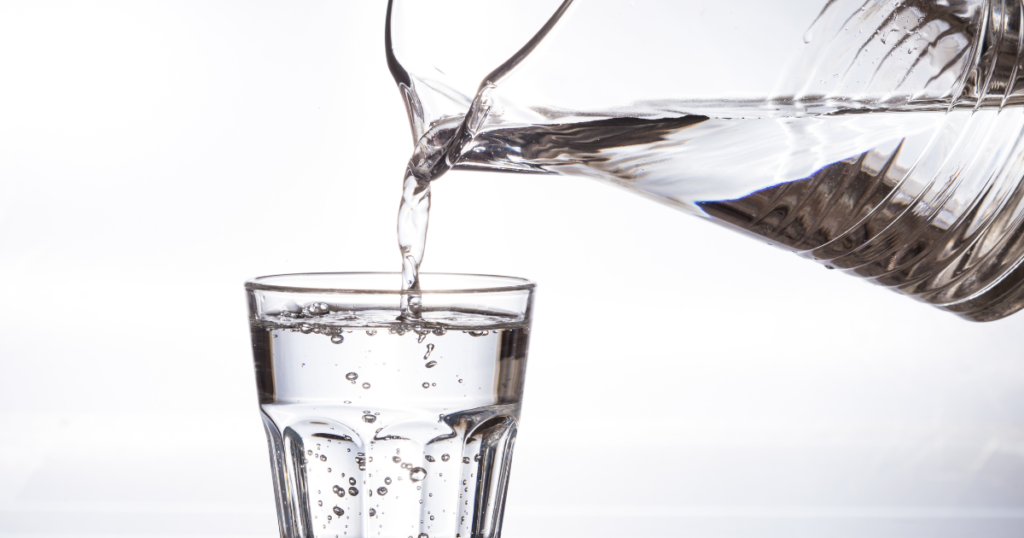Hopefully, you don’t need me to remind you how important hydration is for your health.
Being strategic about what you drink, how much you drink, and when to drink can control blood sugar levels, boost performance, and restore metabolic functions.
That said, there’s a lot more to hydration than just ‘drinking more water.’
Here’s what they don’t tell you about metabolic health and hydration.
It’s not always about drinking more
Hydration follows the Goldilocks Rule.
Too much, and you wash away vitamins and minerals.
Too little, and you dehydrate your vital organs.
The latter is far more common in the US.
Poor hydration can age you faster, impact your mood, and increase your risk for chronic disease. Even a 2% deficit can temporarily dip cognitive performance.
And interestingly, carbohydrate-rich foods and sugary snacks dehydrate you even faster.
The science behind this is simple: the higher your blood sugar is, the faster your body must remove it from your system. Your kidneys work overtime to remove excess sugar, which leads to more trips to the bathroom and less water in your bloodstream. If you’re a type 2 or prediabetic, you’re at an even higher risk for glucose-related dehydration.
Some people try to ‘outdrink’ this water deficit by adding a glass or two to their daily regimine. However, drinking more water isn’t a magic formula for getting healthier. You can’t out-hydrate the effects of snack cakes and jelly donuts, after all.
Plus, too much water can dilute sodium in your blood and possibly encourage insulin resistance. This depletes your body of necessary nutrients and potentially worsens your condition.
The vast majority of us don’t have to worry about excess water, however. Nearly half of all Americans drink less than three glasses per day and another 40% only drink four to seven glasses. If you’re like ~90% of Americans, two or three glasses extra per day won’t have a negative effect on your health.
Not sure how much to drink per day? I’ll give you some pointers:
- The general rule of thumb is 0.5 to 1 ounce of water per pound of body weight per day. If you’re a 150-pound person spending eight hours at the office, 75 ounces of water may be enough. If you’re lifting weights at the gym or mowing the yard, you may want to increase your intake to 150 ounces.
- Some people drink water straight from the gallon or buy bottles with ounce markers to track how much they’ve consumed. If you work from home, try setting glasses of water across your counter. Aim to leave them all empty by the end of the day.
- Consider drinking water with electrolytes, which could be as simple as a pinch of salt and a squeeze of lemon. If you find it easier to simply buy electrolytes, make sure you’re buying a brand without added sugar.
If you don’t know how much water you’re currently drinking, you can download an app or make a note on a piece of paper. You can then use this information as a benchmark number as you work towards reaching your hydration goal.
Quality matters
The flavor of tap water isn’t all in your head. More than seven in 10 Americans say they would drink more water if it tasted better.
But is it safe to drink tap water? That’s largely a personal decision.
Only 92% of US public water meets EPA guidelines. The other 8%, amounting to 2.3 billion gallons of water, does not.
Plus, purified tap water may offer additional benefits — you’re exposed to fewer chemicals and carcinogenic compounds.
If you choose to purchase bottled water, be mindful about the containers. Certain plastics release carcinogenic chemicals and increase your risk for cancer.
To stay hydrated, do you need to buy expensive purifiers or ‘pH adjusted’ water?
No.
But you should put thought into where your water comes from and do your own research to make informed decisions.
You can always use mytapwater.org to check contamination counts in your ZIP code.
Watch your intake during mealtimes
Think back to the last sit-down restaurant you visited. If you ordered water, how much did you drink during your meal?
If it was more than eight ounces, you may have spiked your blood sugar.
Excess water during mealtimes pushes food through your intestines quicker, which speeds up glucose absorption and increases your blood sugar. If you’re eating a high-carb meal (or a sugary snack like jelly donuts), you could rapidly increase your glucose after meals.
To reduce your chances of an accidental spike, try taking small sips throughout your meal. You may also want to drink a glass 30 minutes before or after your meal, which can reduce your fasting blood sugar levels over time.
Want to keep an eye on postprandial sugar spikes? A continuous glucose monitor (CGM) can be an excellent investment.
An encouragement for healthy hydration
The science of hydration is a continuously unfolding conversation.
But the good news is, the basics haven’t changed.
Match your water intake to your body weight. Don’t drink large amounts during meals. Consider incorporating electrolytes like sodium to increase your physical hydration.
But particulars and specifics aside, I just want to see you hydrating more. You don’t need to stress about electrolytes or filtration, especially if you’re just starting your metabolic health journey.
I’d rather you spend energy cutting soda and sugary drinks instead.
Each month, try adding an extra glass of water to your day and subtracting a can of soda. Over time, you can throw new lifestyle changes into the mix (like electrolytes, for example).
I realize this list may seem intimidating at first glance. If you’re looking for customized support and professional recommendations, the metabolic health coaches on my Gold Elite plan can help you build a personalized strategy.

